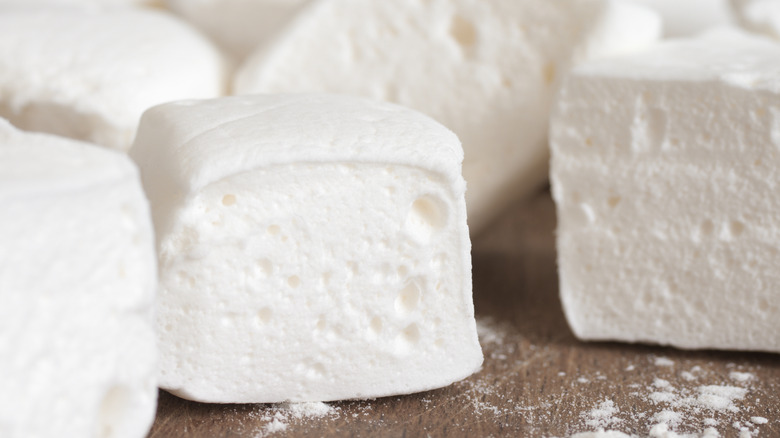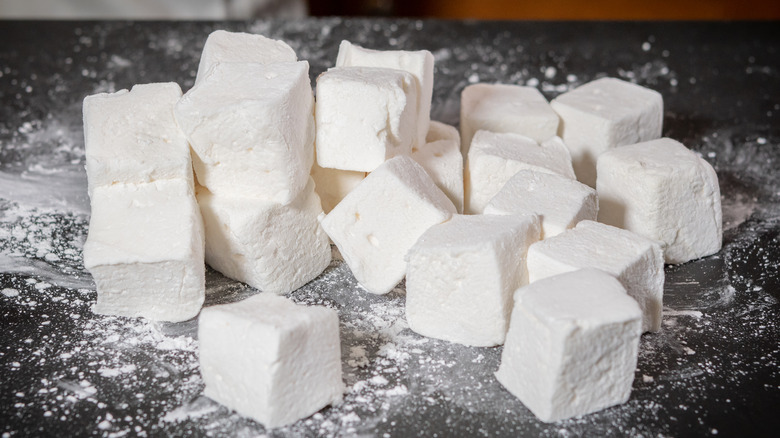Why Your Homemade Marshmallow Isn't Spreading Correctly In The Pan
Like many foods, marshmallows are just better when they are homemade. Not only are you in full control of every ingredient, but the texture, the flavor, and all the qualities that make marshmallows so desirable are more pronounced in the homemade version. And, best of all, marshmallows are not super difficult to make — you only need a few basic ingredients, such as water, sugar, corn syrup, gelatin, and flavoring. However, the process isn't foolproof. It is possible to mess up. Unfortunately, you might not discover you've done something wrong until it is too late. For instance, if you're having trouble spreading the marshmallow in your pan.
The key to getting the perfect marshmallow consistency is in the mixing. As you mix all the hot ingredients together, you inherently add air to the recipe. This air gives your marshmallow its fluff. And as more and more air enters the mix, the gelatin and sugar cool and set. If you mix too long, the marshmallow becomes stubborn. Instead of being a flowing goo, it is already resilient enough to resist your attempts to spread it evenly across your pan. If you overwhip and the gelatin sets quicker than anticipated, your marshmallow will not spread as easily as you hoped.
Tips to ensure your marshmallow always spreads effortlessly in the pan
When making marshmallows, there are a few simple things you can do to help ensure the tastiest results with the best texture. It starts with blooming gelatin powder. While this might sound intimidating, it just means mixing the gelatin with cold water to hydrate it before dissolving it in your recipe. This only takes about 10 or 15 minutes, but it can lead to clumping if you do not bloom the gelatin properly.
The most important part of making marshmallow that always spreads, however, is to make sure you whip it to the proper texture. The marshmallow needs to be whipped till it makes stiff peaks. At this stage, the marshmallow can hold a soft shape for a moment before collapsing back into itself. If the mixture cannot do this, it will be too runny. If you mix past this point, you'll have a thick, rigid that doesn't spread easily in your pan.
It's also important to remember that whenever you are cooking with sugar, hitting the right temperature is essential. For marshmallows, you need to take the temperature to 240 degrees Fahrenheit, but do not go over 245 degrees — any hotter, and your pieces of sweet, pillowy goodness may become too tough.

